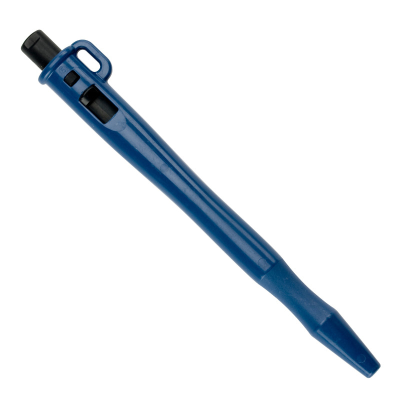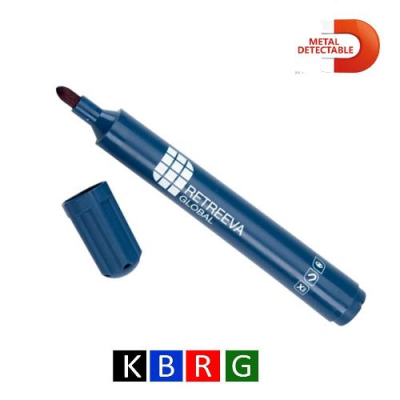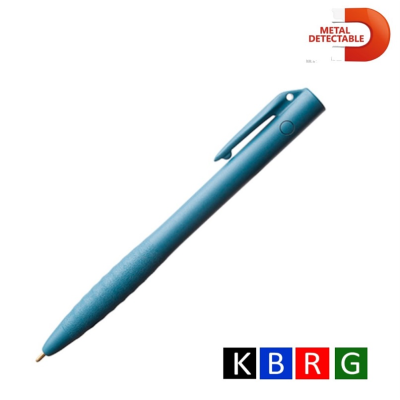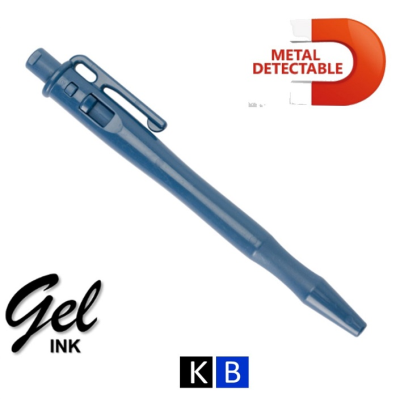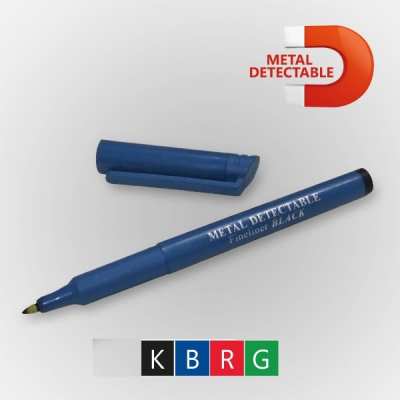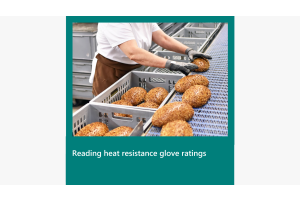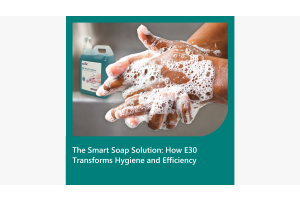What should I look for when selecting a metal detectable pen?

Metal detectable products are becoming increasingly common within the food industry, It is essential to understand the different features and how they can impact you. As always, the priority is ensuring the highest standards of safety are maintained. Pen features vary significantly, so choosing the right pen to suit your needs is essential.
Here are some factors you need to consider when selecting your metal detectable stationery.
Is the most detectable pen the best option?
While it may sound counterintuitive, the pen made from the most detectable plastic might not be the best option. Small amounts of ferrous material are added to the plastic mix to make plastic detectable. Simply put, the higher the ferrous material in the mix, the more detectable the plastic is. However, this both makes the plastic more brittle and decreases its strength. This can be detrimental when it comes to a smaller item like a pen. A more brittle plastic will increase the chance of losing a small part, such as a clip, and cause the product to splinter into many small parts should it suffer impact. The risk is a piece, too small to be detected but large enough to be a serious health concern that may find its way into your food product.
In essence – a less detectable pen that stays in one piece may be safer than a more detectable option that risks breakage.
Does it have a spring?
An important factor in considering pen options is whether the pen includes a spring. Most food safety regulators consider springs a high-risk contaminant and typically ban these from food processing environments. Metal pen springs are typically too small to be detected by metal detection equipment and pose a serious safety risk if present in food.
Does it have a lanyard loop?
Auditors recommend securing pens to a clipboard or secure object to reduce foreign object risk. Choosing a pen with a large lanyard loop for easy securing is beneficial. It is also essential to ensure no pens are attached to clothing with a lanyard, as this poses a safety risk to the workers.
Further considerations:
Two additional features to consider are the body colour of the pen and the ink type. For pens designed for food processing environments, the exterior is usually blue to aid visual detection. Some pen ranges include freezer ink or gel-inked pens. These are designed to not freeze in cold environments, such as cold storage.
Finally, ergonomics. Ease of use and comfort.
Your preference for stick or retractable, lanyard loop, and clip, It is valuable to test a few different brand options to find the most suitable pen for your employees.
While pens may seem small and insignificant to your production area, the impact of being damaged, lost or a malfunctioned pen could be highly damaging. Hence why choosing the right option can significantly reduce the likelihood of an issue occurring.

